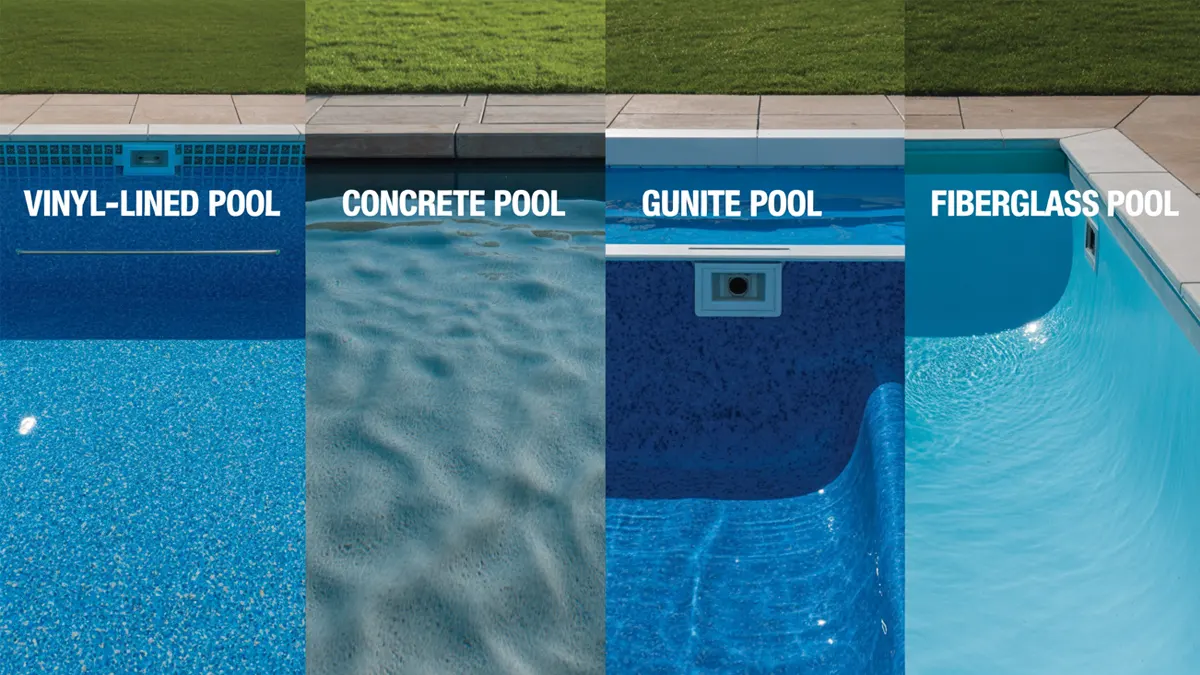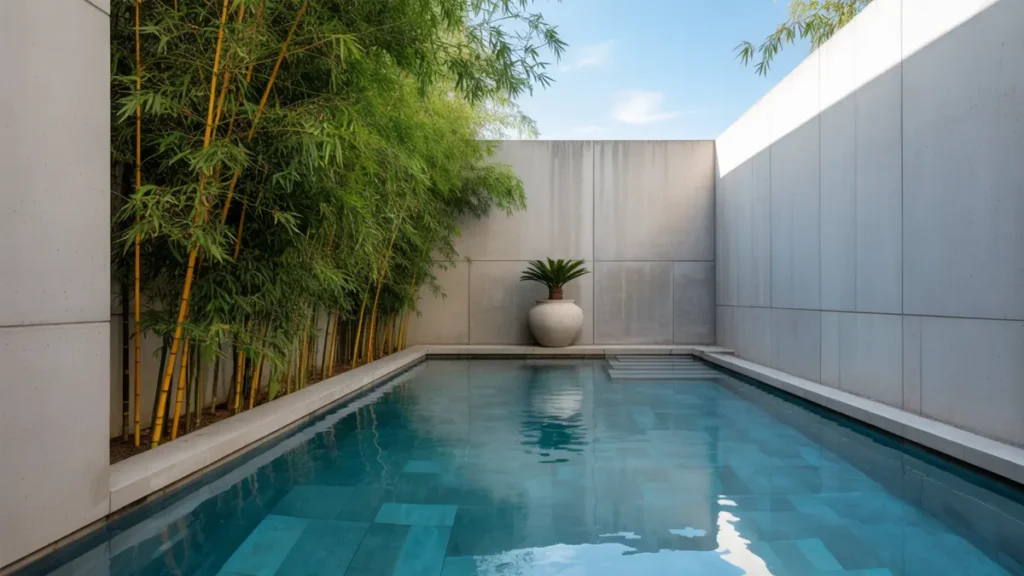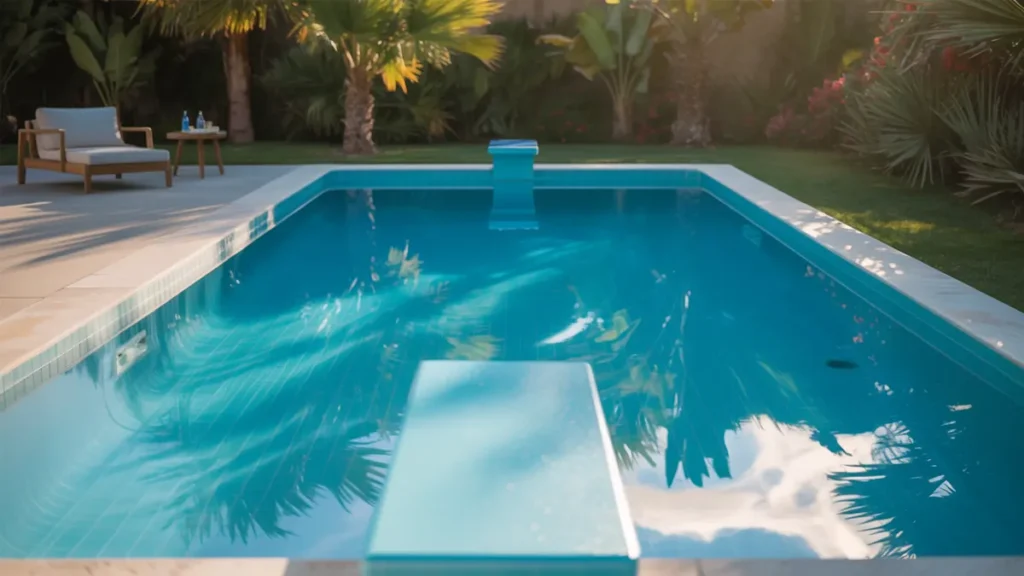
When you decide to invest in an inground pool for your Las Vegas home, one of the first questions you may ask is: How long will my pool last? In a climate as intense as Las Vegas, where the sun beats down for much of the year, it’s essential to know the factors that influence your pool’s lifespan and how to properly maintain it for the long haul. At Pools R Us, we specialize in high-quality pool construction and ensure your pool is built to last, but it’s important to remember that the way you care for your pool will have a significant impact on how long it will last.
Factors Affecting Pool Lifespan in Las Vegas
The lifespan of an inground pool is influenced by several factors, but they are usually more durable than above-ground pools.
In Las Vegas, the extreme sun exposure, combined with the dry desert air, means your pool will face a lot of wear and tear. Here are the main factors that impact pool longevity:
- Weather Conditions: Las Vegas’ high temperatures and constant sun exposure can cause wear on pool materials, especially vinyl and concrete surfaces.
- Type of Pool: Different pool materials—vinyl-lined, concrete, gunite, and fiberglass—have varying lifespans.
- Quality of Installation: At Pools R Us, we ensure a professional installation using top-quality materials, which is essential for the long-lasting durability of your pool.
Proper maintenance is critical to extending your pool’s lifespan, and while we specialize in building pools, we recommend partnering with trusted pool maintenance providers to ensure your pool stays in excellent condition.
Lifespan of Different Types of Inground Pools in Las Vegas
Your pool’s material plays a huge role in how long it will last. Here’s a breakdown of the typical lifespan for each type of inground pool, considering the Las Vegas climate:
Vinyl-Lined Pools (8–15 Years)

Vinyl pools are often the most affordable option, but they require the most upkeep. The liner is subject to wear from the sun and chemicals, typically needing replacement every 6–8 years. The pool shell itself can last 8–15 years with proper care.
Concrete Pools (10–50+ Years)

Concrete pools are known for their durability, and when maintained properly, they can last 50 years or longer. However, the finish of the pool will need resurfacing every 10-15 years. You may notice issues such as cracking or discoloration over time, especially under harsh sun exposure.
Gunite Pools (30+ Years)

Gunite pools, made from a mixture of cement and sand, are highly durable and can last for decades with proper care. They are perfect for those who want a custom pool design and are built to withstand earth movement, which can be a concern in desert environments.
Fiberglass Pools (30+ Years)

Fiberglass pools are another long-lasting option. They are less maintenance-intensive than concrete pools as they resist algae growth and only need occasional cleaning. However, they are the most expensive option upfront.
What to Expect Over the Years
While your pool’s lifespan can range from 8 to 50+ years, different stages in its life will require varying levels of maintenance:
- First 5 Years: In the early years, pools require very little maintenance aside from regular cleaning and water testing. The focus here is on keeping the water clean and checking that the pool’s filtration system is running smoothly.
- 5–10 Years: After five years, you may start noticing some wear. Minor repairs such as resealing the decking or fixing small cracks might be necessary. This is also the time when pool equipment such as pumps or filters might need replacement.
- 10–20 Years: Your pool will begin to show its age during this time. Expect to resurface concrete pools, repair tile or grout, and possibly replace components like the pump or heater.
- 20+ Years: By the time your pool hits the 20-year mark, it may require more significant renovations, particularly if it is concrete or vinyl-lined. This might involve resurfacing, replacing liners, or even rebuilding major components like plumbing or the pool shell.
Pool Maintenance Tips to Extend Lifespan
Taking care of your pool is essential for maintaining its longevity. Here are a few maintenance tips that will help ensure your pool lasts for years:
- Regular Cleaning: Skim the pool daily to remove leaves and debris. This prevents damage to your pool’s surface and keeps your water clean.
- Water Chemistry: Keep the water balanced to prevent algae growth and protect your pool’s finish.
- Regular Equipment Inspections: Ensure your pump, filter, and heater are operating properly. These systems are essential for maintaining water quality and preventing long-term damage to the pool.
While we don’t offer pool maintenance services at Pools R Us, we highly recommend hiring a professional pool service provider for routine cleaning, water testing, and equipment checks. Maintaining your pool properly is key to ensuring it stays in great shape and continues to serve you for decades.
Common Pool Problems and Solutions
As your pool ages, certain issues may arise. Here are some common problems and solutions:
- Leaks and Cracks: Over time, you may notice cracks in the pool surface or plumbing issues. For concrete pools, it’s essential to seal these cracks before they expand and cause more damage.
- Algae Growth: If your pool is showing signs of algae or cloudiness, it’s important to address the issue promptly. For fiberglass pools, the smooth surface makes cleaning easier, while concrete pools may require more frequent maintenance.
- Discoloration and Staining: Concrete pools in particular can show discoloration or staining after years of use. Routine cleaning, chemical balancing, and resurfacing will help address these issues.
When Is It Time to Replace Your Pool?
Knowing when to repair or replace your pool is crucial. Here are signs it might be time for a replacement:
- Excessive Repairs: If your pool needs constant repairs, it may be more cost-effective to replace it.
- Aesthetic Decline: If your pool is looking worn down, cracked, or outdated, it could reduce your property’s value.
- Non-Functioning Equipment: If major pool systems (like the pump, filter, or plumbing) are failing and repairs are too expensive, it may be time for a replacement.
At Pools R Us, we understand that deciding whether to repair or replace a pool is a big decision. We recommend consulting with a professional pool installer to assess the condition of your pool.
Closing thoughts
Investing in an inground pool is a significant decision, and ensuring that your pool lasts for many years requires attention to maintenance and proper care. By choosing Pools R Us for your pool construction, you can rest assured that your pool is built to last. While we specialize in new pool construction, we recommend partnering with trusted pool maintenance professionals to keep your pool in top shape.Ready to build the pool of your dreams? Visit our About Us page or Contact Us today to get started. Learn more about the services we offer on our Services page, and let us help you create a pool that will be enjoyed for years to come.